Lures Trolling soft lures 30 - 49 gr
()Sort by
-

Hart Octopus Trolling Soft Lure 110 mm
4.99 €
-

Hart Octopus Trolling Soft Lure 90 mm
4.99 €
-

Hart Octopus Trolling Soft Lure 125 mm
9.99 €
-

Ragot Ragtuna 8255S Trolling Soft Lure 70 mm 3 Units
4.99 €
-
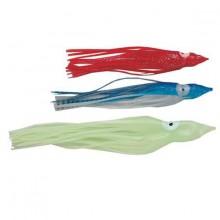
Evia Octopus Trolling Soft Lure 65 mm
1.49 €
-

ZunZun Needle Trolling Soft Lure 50 mm
4.99 €
-

Kinetic Monster Octopus Trolling Soft Lure 160 mm
2.99 €
-

Kinetic Monster Octopus Trolling Soft Lure 200 mm
3.49 €
-
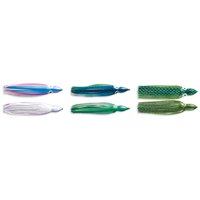
Yo-Zuri Octopus Skirt Trolling Soft Lure 90 mm
6.99 €
-

Mustad Inkvader Octopus Jig Trolling Soft Lure 280g
22.99 €
-

Zebco Z-Sea Single Rotation Trolling Soft Lure 1
1.99 €
-

Kinetic Sabiki Octopus Lightstick Trolling Soft Lure
3.99 €
-
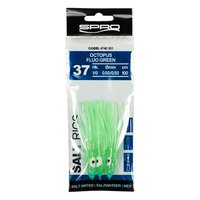
SPRO Octopus 1/0 Trolling Soft Lure
2.99 €
-

Ragot Mitraillette Octopus Rig Trolling Soft Lure
3.49 €
-
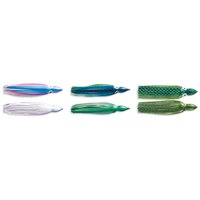
Yo-Zuri Octopus Skirt Trolling Soft Lure 75 mm
6.49 €
-
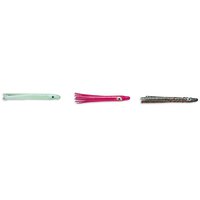
Yo-Zuri Hula Hula Trolling Soft Lure 45 mm
4.99 €
-

ZunZun Needle Trolling Soft Lure 90 mm
4.99 €
-

Zebco Z-Sea Twin Rotation Trolling Soft Lure 4
1.99 €
-

Williamson Dingo Metal Jet Trolling Soft Lure 75 mm
9.99 €
-

Flashmer Octopus Trolling Soft Lure 110 mm
2.99 €
-

Mikado Hokkai Rig 1/0 Trolling Soft Lure
2.99 €
-
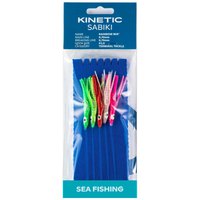
Kinetic Sabiki Blekksprut Mini Trolling Soft Lure
2.49 €
-

SPRO Herring 8 Trolling Feather 5 Units
1.99 €
-

SPRO Octopus 1/0 Trolling Soft Lure
2.99 €
-
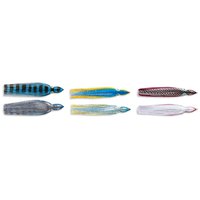
Yo-Zuri Octopus Skirt Trolling Soft Lure 120 mm
4.99 €
-
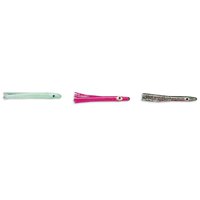
Yo-Zuri Hula Hula Mini Trolling Soft Lure 35 mm
4.99 €
-

ZunZun Gun´s Tako Curly Trolling Soft Lure
5.99 €
-

Sea Monsters Octopus Trolling Soft Lure 100 mm
3.99 €
-

Sea Monsters Octopus Trolling Soft Lure 120 mm
3.99 €
-

Yamashita Octopus Trolling Soft Lure 90 mm
7.49 €
-
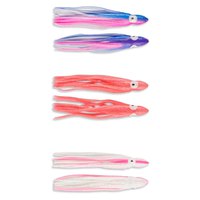
Kali Pulpitos Trolling Soft Lure 120 mm
4.99 €
-
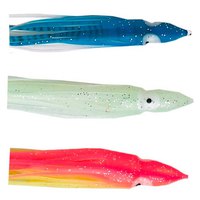
Evia Octopus Trolling Soft Lure 90 mm 5 Units
2.49 €
-

Williamson Octopus Skid Trolling Soft Lure 110 mm 5 Units
2.49 €
-

Flashmer Trolling Soft Lure
4.99 €
-
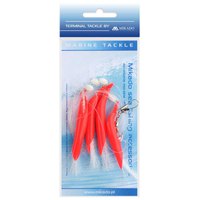
Mikado Hair Tube 3/0 Trolling Soft Lure
1.49 €
-
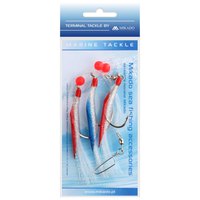
Mikado Hair Tube Trolling Soft Lure
0.99 €
-
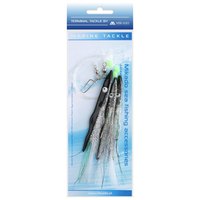
Mikado Belona LS-C162 Trolling Soft Lure
1.49 €
-

Lineaeffe Octopus Trolling Soft Lure 90 mm
1.99 €
-

SPRO Octopus 3/0 Trolling Soft Lure
2.49 €
-

SPRO Octopus 1/0 Trolling Soft Lure
2.99 €
-

SPRO Octopus 3/0 Trolling Soft Lure
2.99 €
-
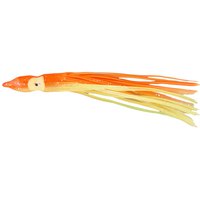
SPRO Octopus 3/0 Trolling Soft Lure
2.49 €
-
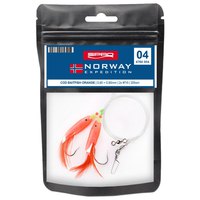
SPRO Cod Baitfish Trolling Feather
7.99 €
-

SPRO Octopus 1/0 Trolling Soft Lure
2.99 €
-

Ragot Ragtuna 8255S 2/0 Trolling Soft Lure 70 mm
4.99 €
-

ZunZun Trolling Feather
2.99 €
-

ZunZun Gun´s Tako Trolling Soft Lure
6.49 €
-

ZunZun Needle Trolling Soft Lure 70 mm
4.99 €
-

Mustad Cod Rig 3/0 Trolling Soft Lure
2.99 €
-

Mustad Cod Rig 6/0 Trolling Soft Lure
2.99 €
-

Sea Monsters Octopus Mini Trolling Soft Lure 90 mm
3.49 €
-

Sea Monsters Pulpito Rafia Trolling Soft Lure
2.99 €
-

Zebco Z-Sea Twin Rotation Trolling Soft Lure 1
2.49 €
-
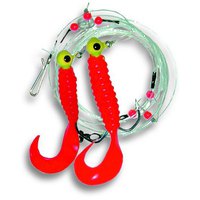
Zebco Z-Sea Rotation Trolling Soft Lure 4
2.99 €
-

Zebco Z-Sea Twin Rotation Trolling Soft Lure 2
1.99 €
-

Zebco Z-Sea Rotation Trolling Soft Lure 3
1.99 €
-

Zebco Z-Sea Twin Rotation Trolling Soft Lure 3
2.49 €
-

Zebco Glitter Trolling Feather
2.49 €
-

Williamson Big Game Catcher Trolling Soft Lure 210 mm
13.99 €
-

Williamson Diamond Jet Trolling Soft Lure 130 mm
17.99 €
-

Williamson Live Ballyhoo Combo Trolling Soft Lure 260 mm
25.99 €
-

Williamson Albacore Feather Trolling Soft Lure 165 mm
10.49 €
-

Sugoi Trolling Feather 9g
4.99 €
-

Sugoi Trolling Feather 4g
3.99 €
-

Sugoi Trolling Feather 6.5g
3.99 €
-

Flashmer Octopus Trolling Soft Lure 60 mm
2.99 €
-

Mikado Octopus Rig Hair Trolling Soft Lure 75 mm
1 €
-

Mikado Octopus Trolling Soft Lure 120 mm
1.99 €
-

Mikado Belona LS-C160 Trolling Soft Lure
1.49 €
-

Mikado LS-C168 Treble Pilk Twist Trolling Soft Lure
1.49 €
-

Mikado Hair Tube 4/0 Trolling Soft Lure
0.99 €
-

Mikado Squid LS-C173 Trolling Soft Lure
1.99 €
-
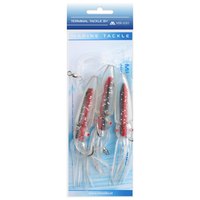
Mikado Squid LS-C167 Trolling Soft Lure
1.99 €
-
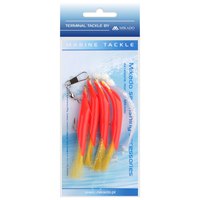
Mikado Hair Tube 1/0 Trolling Soft Lure
0.99 €
-

Hart 1 Trolling Soft Lure 110 mm
9.99 €
-

Kinetic Fiskeharpe Standard Trolling Soft Lure 300g
15 €
-

Kinetic Fiskeharpe Sorte Kroker Trolling Soft Lure 300g
17.99 €
-

Kinetic Pilkesnøre Trolling Soft Lure 200g
13.99 €
-

Kinetic Havsnøre Trolling Soft Lure 400g
29.99 €
-
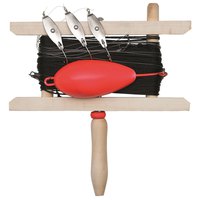
Kinetic Dørgeharpe Trolling Soft Lure 500g
18.99 €
-
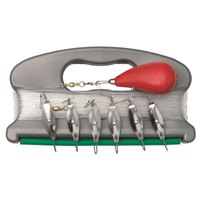
Kinetic Fiskeharpe Rykk Trolling Soft Lure 250g
13.99 €
-
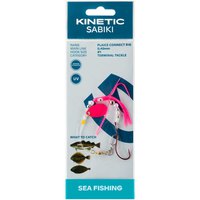
Kinetic Sabiki Plaice Connect Trolling Soft Lure 350 mm
1.99 €
-
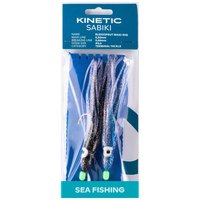
Kinetic Sabiki Blekksprut Maxi Trolling Soft Lure
2.99 €
-

Lineaeffe Octopus Trolling Soft Lure 75 mm
1.49 €
-

Lineaeffe Octopus Trolling Soft Lure 50 mm
1.49 €
-

Lineaeffe Mini Octopus Trolling Soft Lure
5.99 €
-

Lineaeffe Silicone Trolling Soft Lure 20 mm
1.99 €
-
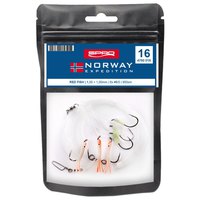
SPRO Red Fish Trolling Soft Lure 6/0
8.99 €
-
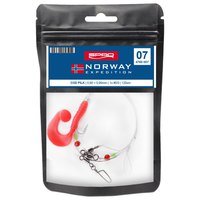
SPRO COD Pilk Trolling Soft Lure 5/0
6.99 €
-
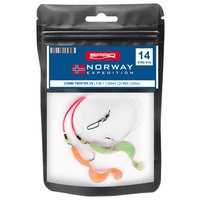
SPRO Combi Twister Trolling Soft Lure
6.99 €
-
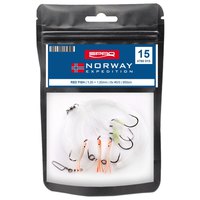
SPRO Red Fish Trolling Soft Lure 5/0
8.99 €
-
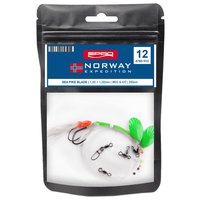
SPRO Sea Pike Blade Trolling Soft Lure
15.49 €
-

SPRO COD Flasher Trolling Feather
6.99 €
-

ZunZun Cicerello Trolling Feather 90 mm
2.99 €
-

ZunZun Needle Trolling Soft Lure 40 mm
3.99 €
-

ZunZun Sea Trolling Feather 2
1.49 €
What are soft lures used for?
These soft lures refer to soft plastic fishing lures specifically designed for trolling, which is a fishing technique where lures are pulled behind a moving boat. These lures are made of soft, flexible materials like silicone or rubber and are designed to mimic baitfish, insects, or other prey that fish feed on.Trolling soft lures typically have a realistic body shape, including fins, tails, and sometimes even eyes, to imitate the appearance of a live or injured fish. They are available in a variety of sizes, colors, and designs to match different fishing conditions and target species.
One common feature of these soft lures is the inclusion of a hook or hooks, often hidden or partially exposed within the lure´s body. The hooks are usually attached using a jighead or built into the lure itself. This design allows for better hooksets when a fish strikes, increasing the chances of a successful hookup. Soft plastic lures are artificial baits made of soft, flexible materials like silicone, rubber, or plastic that are used to attract and catch fish. These fishing soft plastic lures are designed to imitate various types of prey, such as baitfish, worms, insects, or crustaceans, depending on the target species and fishing conditions. The soft, flexible nature of these lures gives them a realistic action in the water, making them appealing to fish. You can buy soft plastic lures from these brands: Hart, Mikado, Lineaeffe, Kinetic, SPRO, and Rhino.
Choosing the right soft lures involves considering several factors such as fish species, fishing conditions, water depth, color, size, action, and presentation. Here´s a guide to help you select the right soft lures:
Fish species and forage: Consider the type of fish you´re targeting and the natural prey in the area. Soft lures come in various shapes and styles to imitate different types of forage such as baitfish, worms, crayfish, or insects.
Size and profile: Select the size and profile of the soft lure based on the size of the fish you´re targeting and the forage available. Larger lures might attract bigger fish, while smaller ones may entice smaller species.
Color: Choose lure colors based on water clarity and light conditions. In murky water or low light, opt for brighter or contrasting colors that stand out. In clear water, more natural or realistic colors resembling local baitfish or prey might work better.
Action and movement: Soft lures offer various actions—swimming, fluttering, wobbling, or vibrating in the water. Consider the action that mimics the behavior of the prey species or the fishing technique you plan to use.
Material and durability: Look for soft lures made from durable materials that can withstand repeated use and the teeth of fish. Materials like silicone, rubber, or soft plastics are commonly used for their durability and lifelike movement in the water.
Weight and rigging options: Some soft lures come pre weighted, while others require additional weights or jig heads for proper presentation. Choose based on the fishing depth and the action you want to achieve.
Versatility: Consider soft lures that are versatile and can be used in different fishing techniques such as Texas rig, Carolina rig, drop shot, jigging, or weedless rigging.

























